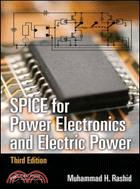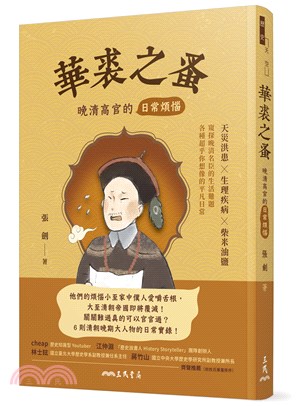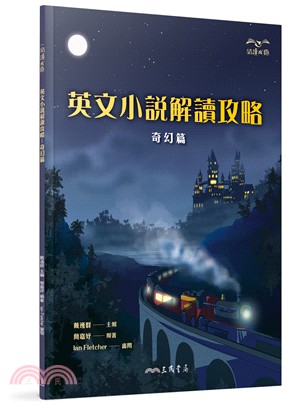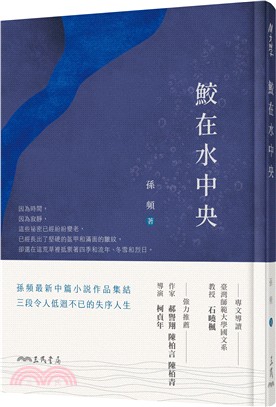SPICE for Power Electronics and Electric Power
商品資訊
ISBN13:9781439860465
出版社:CRC PRESS
作者:Muhammad H. Rashid
出版日:2012/05/24
裝訂/頁數:精裝/559頁
規格:24.1cm*16.5cm*3.2cm (高/寬/厚)
版次:3
定價
:NT$ 13650 元優惠價
:90 折 12285 元
若需訂購本書,請電洽客服 02-25006600[分機130、131]。
商品簡介
作者簡介
目次
相關商品
商品簡介
Power electronics can be a difficult course for students to understand and for professors to teach. Simplifying the process for both, SPICE for Power Electronics and Electric Power, Third Edition illustrates methods of integrating industry standard SPICE software for design verification and as a theoretical laboratory bench.
Helpful PSpice Software and Program Files Available for Download
Based on the author Muhammad H. Rashid’s considerable experience merging design content and SPICE into a power electronics course, this vastly improved and updated edition focuses on helping readers integrate the SPICE simulator with a minimum amount of time and effort. Giving users a better understanding of the operation of a power electronics circuit, the author explores the transient behavior of current and voltage waveforms for each and every circuit element at every stage. The book also includes examples of all types of power converters, as well as circuits with linear and nonlinear inductors.
New in this edition:
Student learning outcomes (SLOs) listed at the start of each chapter
Changes to run on OrCAD version 9.2
Added VPRINT1 and IPRINT1 commands and examples
Notes that identify important concepts
Examples illustrating EVALUE, GVALUE, ETABLE, GTABLE, ELAPLACE, GLAPLACE, EFREQ, and GFREQ
Mathematical relations for expected outcomes, where appropriate
The Fourier series of the output voltages for rectifiers and inverters
PSpice simulations of DC link inverters and AC voltage controllers with PWM control
This book demonstrates techniques of executing power conversions and ensuring the quality of the output waveforms rather than the accurate modeling of power semiconductor devices. This approach benefits students, enabling them to compare classroom results obtained with simple switch models of devices. In addition, a new chapter covers multi-level converters.
Assuming no prior knowledge of SPICE or PSpice simulation, the text provides detailed step-by-step instructions on how to draw a schematic of a circuit, execute simulations, and view or plot the output results. It also includes suggestions for laboratory experiments and design problems that can be used for student homework assignments.
Helpful PSpice Software and Program Files Available for Download
Based on the author Muhammad H. Rashid’s considerable experience merging design content and SPICE into a power electronics course, this vastly improved and updated edition focuses on helping readers integrate the SPICE simulator with a minimum amount of time and effort. Giving users a better understanding of the operation of a power electronics circuit, the author explores the transient behavior of current and voltage waveforms for each and every circuit element at every stage. The book also includes examples of all types of power converters, as well as circuits with linear and nonlinear inductors.
New in this edition:
Student learning outcomes (SLOs) listed at the start of each chapter
Changes to run on OrCAD version 9.2
Added VPRINT1 and IPRINT1 commands and examples
Notes that identify important concepts
Examples illustrating EVALUE, GVALUE, ETABLE, GTABLE, ELAPLACE, GLAPLACE, EFREQ, and GFREQ
Mathematical relations for expected outcomes, where appropriate
The Fourier series of the output voltages for rectifiers and inverters
PSpice simulations of DC link inverters and AC voltage controllers with PWM control
This book demonstrates techniques of executing power conversions and ensuring the quality of the output waveforms rather than the accurate modeling of power semiconductor devices. This approach benefits students, enabling them to compare classroom results obtained with simple switch models of devices. In addition, a new chapter covers multi-level converters.
Assuming no prior knowledge of SPICE or PSpice simulation, the text provides detailed step-by-step instructions on how to draw a schematic of a circuit, execute simulations, and view or plot the output results. It also includes suggestions for laboratory experiments and design problems that can be used for student homework assignments.
作者簡介
Muhammad H. Rashid is a professor (and past director, 1997-2007) of electrical and computer engineering at the University of West Florida. Dr. Rashid received his BSc degree in electrical engineering from the Bangladesh University of Engineering and Technology, and his MSc and PhD degrees from the University of Birmingham in the United Kingdom. He has worked around the world as a professor of electrical engineering Dr. Rashid is actively involved in teaching, researching, and lecturing in power electronics. He has published 17 books and more than 140 technical papers. His books are adopted as textbooks all over the world. In addition, He has been invited by many foreign governments and agencies to give keynote lectures and consulted by foreign universities to serve as an external examiner for undergraduate, master’s degree, and PhD examinations, by funding agencies to review research proposals, and by U.S. and foreign universities to evaluate promotion cases for professorship. Among his many awards, Dr. Rashid has received the Outstanding Engineer Award from The Institute of Electrical and Electronics Engineers, the IEEE Educational Activity Award (EAB) for Meritorious Achievement Award in Continuing Education, and the IEEE Undergraduate Teaching Award.
目次
Introduction
Descriptions of SPICE
Types of SPICE
Types of Analysis
Limitations of PSpice
Descriptions of Simulation Software Tools
PSpice Platform
PSpice Schematics versus OrCAD Capture
SPICE Resources
Circuit Descriptions
Input Files
Nodes
Element Values
Circuit Elements
Element Models
Sources
Output Variables
Types of Analysis
PSpice Output Commands
Format of Circuit Files
Format of Output Files
Examples of PSpice Simulations
PSpice Schematics
Importing Microsim Schematics in OrCAD Capture
Defining Output Variables
DC Sweep and Transient Analysis
AC Analysis
Output Markers
Noise Analysis
Voltage and Current Sources
Sources Modeling
Independent Sources
Dependent Sources
Behavioral Device Modeling
Passive Elements
Modeling of Elements
Operating Temperature
RLC Elements
Magnetic Elements and Transformers
Lossless Transmission Lines
Switches
Dot Commands
Models
Types of Output
Operating Temperature and End of Circuit
Options
DC Analysis
AC Analysis
Noise Analysis
Transient Analysis
Fourier Analysis
Monte Carlo Analysis
Sensitivity and Worst-Case Analysis
Diode Rectifiers
Diode Model
Diode Statement
Diode Characteristics
Diode Parameters
Diode Rectifiers
Laboratory Experiments
DC–DC Converters
DC Switch Chopper
BJT SPICE Model
BJT Parameters
Examples of BJT DC–DC Converters
MOSFET Choppers
MOSFET Parameters
Examples of MOSFET DC–DC Converters
IGBT Model
Examples of IGBT DC−DC Converters
Laboratory Experiment
Pulse-Width–Modulated Inverters
Voltage-Source Inverters
Current-Source Inverters
DC Link Inverters
Laboratory Experiments
Resonant-Pulse Inverters
Resonant-Pulse Inverters
Zero-Current Switching Converters
Zero-Voltage Switching Converter
Laboratory Experiments
Controlled Rectifiers
AC Thyristor Model
Controlled Rectifiers
Examples of Controlled Rectifiers
Switched Thyristor DC Model
GTO Thyristor Model
Example of Forced-Commutated Rectifiers
Laboratory Experiments
AC Voltage Controllers
AC Thyristor Model
Phase-Controlled AC Voltage Controllers
Examples of Phase-Controlled AC Voltage Controllers
AC Voltage Controllers with PWM Control
Cycloconverters
Laboratory Experiments
Control Applications
Op-Amp Circuits
Control Systems
Signal Conditioning Circuits
Closed-Loop Current Control
Characteristics of Electrical Motors
DC Motor Characteristics
Induction Motor Characteristics
Simulation Errors, Convergence Problems, and Other Difficulties
Large Circuits
Running Multiple Circuits
Large Outputs
Long Transient Runs
Convergence
Analysis Accuracy
Negative Component Values
Power-Switching Circuits
Floating Nodes
Nodes with Fewer than Two Connections
Voltage Source and Inductor Loops
Running PSpice Files on SPICE
Running SPICE Files on PSpice
Using Earlier Version of Schematics
Descriptions of SPICE
Types of SPICE
Types of Analysis
Limitations of PSpice
Descriptions of Simulation Software Tools
PSpice Platform
PSpice Schematics versus OrCAD Capture
SPICE Resources
Circuit Descriptions
Input Files
Nodes
Element Values
Circuit Elements
Element Models
Sources
Output Variables
Types of Analysis
PSpice Output Commands
Format of Circuit Files
Format of Output Files
Examples of PSpice Simulations
PSpice Schematics
Importing Microsim Schematics in OrCAD Capture
Defining Output Variables
DC Sweep and Transient Analysis
AC Analysis
Output Markers
Noise Analysis
Voltage and Current Sources
Sources Modeling
Independent Sources
Dependent Sources
Behavioral Device Modeling
Passive Elements
Modeling of Elements
Operating Temperature
RLC Elements
Magnetic Elements and Transformers
Lossless Transmission Lines
Switches
Dot Commands
Models
Types of Output
Operating Temperature and End of Circuit
Options
DC Analysis
AC Analysis
Noise Analysis
Transient Analysis
Fourier Analysis
Monte Carlo Analysis
Sensitivity and Worst-Case Analysis
Diode Rectifiers
Diode Model
Diode Statement
Diode Characteristics
Diode Parameters
Diode Rectifiers
Laboratory Experiments
DC–DC Converters
DC Switch Chopper
BJT SPICE Model
BJT Parameters
Examples of BJT DC–DC Converters
MOSFET Choppers
MOSFET Parameters
Examples of MOSFET DC–DC Converters
IGBT Model
Examples of IGBT DC−DC Converters
Laboratory Experiment
Pulse-Width–Modulated Inverters
Voltage-Source Inverters
Current-Source Inverters
DC Link Inverters
Laboratory Experiments
Resonant-Pulse Inverters
Resonant-Pulse Inverters
Zero-Current Switching Converters
Zero-Voltage Switching Converter
Laboratory Experiments
Controlled Rectifiers
AC Thyristor Model
Controlled Rectifiers
Examples of Controlled Rectifiers
Switched Thyristor DC Model
GTO Thyristor Model
Example of Forced-Commutated Rectifiers
Laboratory Experiments
AC Voltage Controllers
AC Thyristor Model
Phase-Controlled AC Voltage Controllers
Examples of Phase-Controlled AC Voltage Controllers
AC Voltage Controllers with PWM Control
Cycloconverters
Laboratory Experiments
Control Applications
Op-Amp Circuits
Control Systems
Signal Conditioning Circuits
Closed-Loop Current Control
Characteristics of Electrical Motors
DC Motor Characteristics
Induction Motor Characteristics
Simulation Errors, Convergence Problems, and Other Difficulties
Large Circuits
Running Multiple Circuits
Large Outputs
Long Transient Runs
Convergence
Analysis Accuracy
Negative Component Values
Power-Switching Circuits
Floating Nodes
Nodes with Fewer than Two Connections
Voltage Source and Inductor Loops
Running PSpice Files on SPICE
Running SPICE Files on PSpice
Using Earlier Version of Schematics
主題書展
更多
主題書展
更多書展今日66折
您曾經瀏覽過的商品
購物須知
外文書商品之書封,為出版社提供之樣本。實際出貨商品,以出版社所提供之現有版本為主。部份書籍,因出版社供應狀況特殊,匯率將依實際狀況做調整。
無庫存之商品,在您完成訂單程序之後,將以空運的方式為你下單調貨。為了縮短等待的時間,建議您將外文書與其他商品分開下單,以獲得最快的取貨速度,平均調貨時間為1~2個月。
為了保護您的權益,「三民網路書店」提供會員七日商品鑑賞期(收到商品為起始日)。
若要辦理退貨,請在商品鑑賞期內寄回,且商品必須是全新狀態與完整包裝(商品、附件、發票、隨貨贈品等)否則恕不接受退貨。
























